Fly Tying
now browsing by category
Posted by: Ian Cox | on January 9, 2014
The Regulation Of Trout
Introduction
The context that currently applies to the regulation of trout in this country is one of revolutionary change. I say so because the mind-set and vision that informs decisions around trout today cannot be more different than that which applied say 30 years ago.
- 30 years ago trout were a protected species enjoying significant government support.
- Now in law at least they are condemned as invasive aliens and must either be eradicated or controlled for that purpose.
Posted in Fresh Water Fly, Informational, Trout | No Comments »
Posted by: Warren Prior | on August 27, 2013
Kamberg Nymph
Posted in Bass, Fly Tying, Fresh Water Fly, Trout | No Comments »
Posted by: Warren Prior | on August 5, 2013
Papa Roach
Posted in Bass, Fly Tying, Fresh Water Fly, Trout | No Comments »
Posted by: Warren Prior | on July 3, 2013
The PTN
Posted in Fly Tying, Fresh Water Fly, Trout, Yellowfish | No Comments »
Posted by: Warren Prior | on July 2, 2013
The Bay Shrimp
Posted in Fly Tying, Salt Water Fly | No Comments »
Posted by: Warren Prior | on July 2, 2013
Peter Brigg’s Wolf Spider
Posted in Fly Tying, Fresh Water Fly, Trout | No Comments »
Posted by: Warren Prior | on May 6, 2013
Brush Fly
Posted in Fly Tying, Salt Water Fly | No Comments »
Posted by: admin | on October 22, 2012
Crab Pattern
Crab Pattern |
|
|
|
|
Materials |
|
| Hook | SS Long Shank #3 to #6 |
| Thread | 3/0 or finer colour to match |
| Head | Dumbbell Eyes |
| Pincers | Hen Hackle and Flash |
| Body | Yarn Colour to match natural Tan to Brown Olive |
| Legs | Rubber Legs |
Tying Instructions |
|
| 1) Dress shank of hook and tie in Dumbbell eyes behind the eye.
2) Tie in a small bunch of flash above the barb. 3) Tie in a pair of hen hackles curving outward to simulate the pincers. 4)Reverse the hook in the vice and starting below the barb tie in short lengths of yarn at 90 deg to the shank using figure of 8 method. 5) Repeat with alternate shade to create a striped body. Use 2 of the primary colour to one for the stripe. 6) Repeat this process right up to the dumbbell eyes. 7) Trim the yarn to form a crab shaped body. 8) Tie in the rubber legs using a simple half hitch and trim the legs to length. 9)A very small amount of super glue can be used on the leg knots as well as the dumbbell eyes. 10)This fly can be fished in the surf zone with as sinking line as well as letting it drift in deeper water. |
|
Variation |
|
|
|
|
Posted in Fly Tying, Salt Water Fly | No Comments »
Posted by: admin | on October 22, 2012
Traditional Soft Hackle
Traditional Soft Hackle |
|
|
|
|
Materials |
|
| Hook | Wet Fly #10 to #18 |
| Thread | 6/0 or finer (colour of choice) |
| Rib | Copper wire |
| Body | Natural Dubbing Colour of choice |
| Wing | Partridge Pheasant or hen Hackle |
Tying Instructions |
|
| 1) Dress shank down to above the barb.
2) Tie in the ribbing. 3) Dub the thread forming a tapered noodle. Note: When viewing from the top the dubbing should be twisted in a clockwise direction to prevent unwinding as it is wrapped around the hook shank. (reverse for Left Handed) 4) Wrap the dubbing forward forming a tapered body. Leave enough room for the hackle and head. 5) Wrap the Ribbing forward through the body in the opposite direction. Tie off. 6) Prepare the feather by clamping the tip in hackle pliers. Then (with the small finger of the right hand in the hackle pliers loop and the left hand holding the feather taught) with the shiny side up using the thumb and fore finger of the right hand stroke the fibres down and back. Repeat the process until the fibres on both side of the quill are against each other. 7) Remove hackle pliers from the feather and tie the prepared feather in by the tip with fibres facing back and the quill vertical. 8) Now wrap the feather in 3 or 4 close wound wraps forward toward the hook eye and tie off. 9) Form a neat thread head, whip finish and varnish. |
|
Posted in Fly Tying, Fresh Water Fly, Trout | No Comments »
Posted by: Warren Prior | on October 22, 2012
Klinkhammer Variant
Klinkhammer Variant |
|
A trout fly variation tied by Peter Brigg. |
|
|
|
|
Materials |
|
| Hook | Partridge 15BNX ‘Klinkhamer Extreme’ 12-16 |
| Thread | Black 6/0 or finer |
| Shuck | Antron fibres or stretched slingwrap film |
| Body | Stripped Peacock Hurl |
| Rib | Fine Copper Wire |
| Wing | Closed cell foam and hackle |
| Thorax | Peacock Hurl |
Tying Instructions |
|
| 1) Dress the hook shank with thread.2) Tie in the thin strip of foam on top of the hook about 1/3 back from the eye. Secure with fig of 8 wraps and then wrap around base above hook and fold upward to form a wing post.
3) Tie in the strands of antron at the bend of the hook to form the shuck. 4) At the same point tie in the rib and the stripped peacock hurl. 5) Wrap the hurl forward to behind the wing forming a tapered body and tie off. 6) Wrap the rib in even turns to the same point and tie off. 7) Tie in the hackle butt end under the wing and bend at 90 deg. so it is pointing toward you. 8) Tie one or two strands peacock hurl under wing and wrap behind and in front to form a neat thorax. Tie off. 9)Wrap the hackle around the base of the foam wing, tie off and form a small head with the thread. Whip finish and cement if desired. 10) Trim the foam wing to shape. |
|
Posted in Fly Tying, Fresh Water Fly, Trout | No Comments »

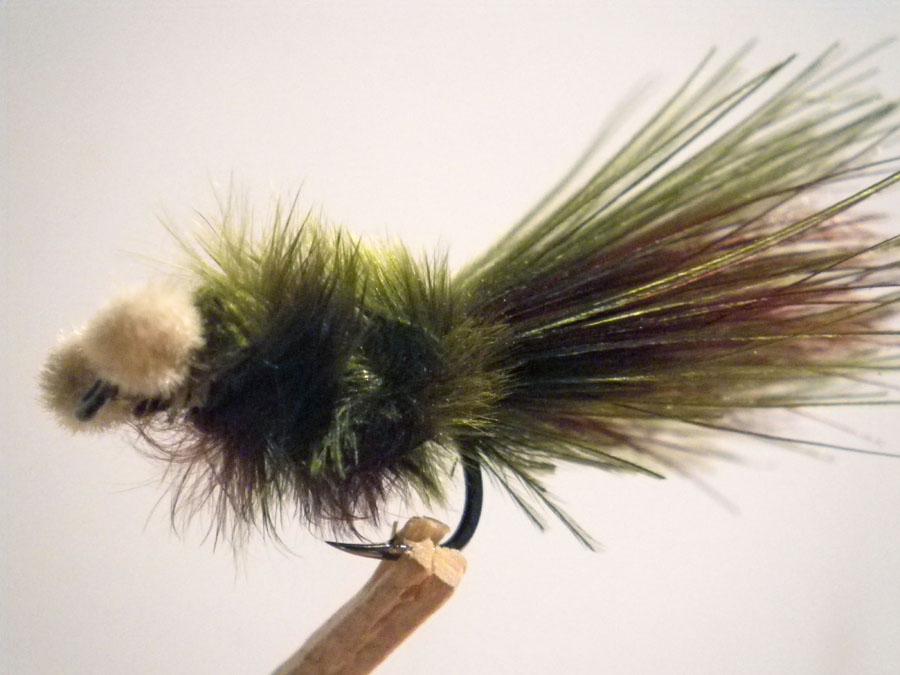
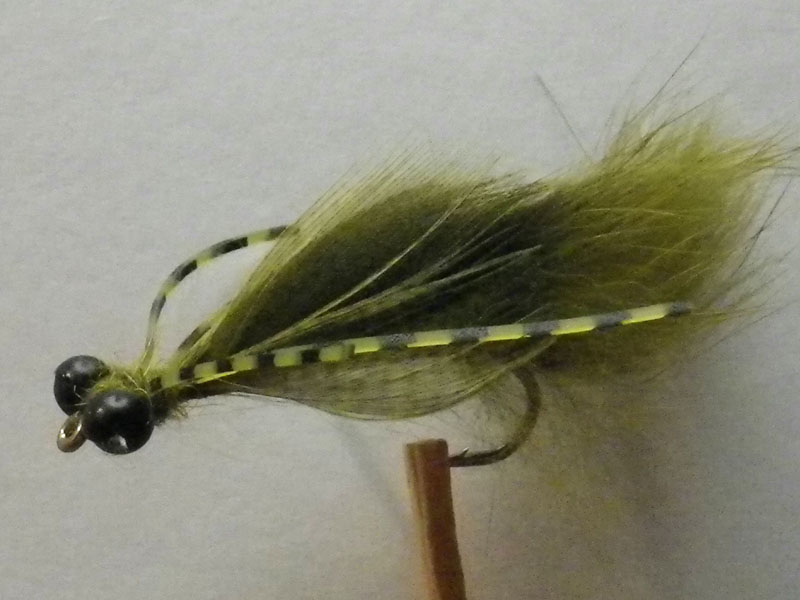
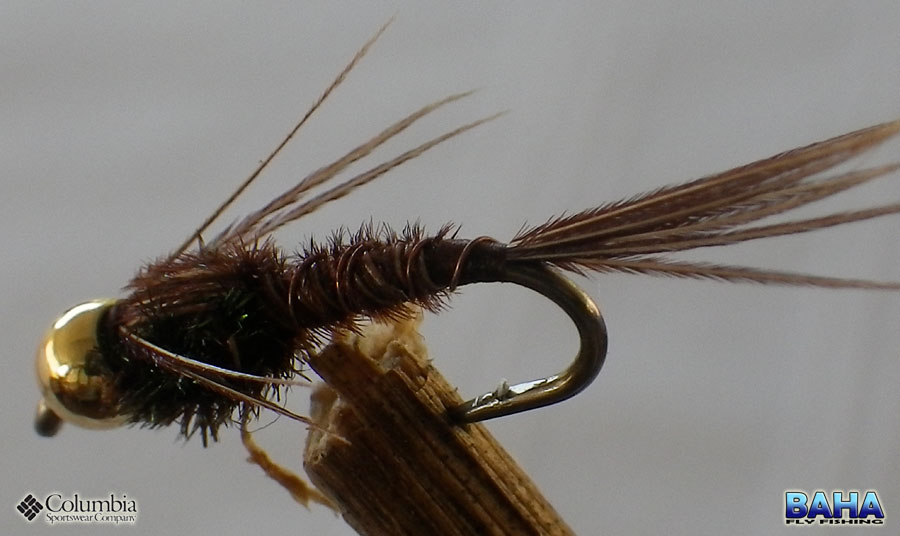
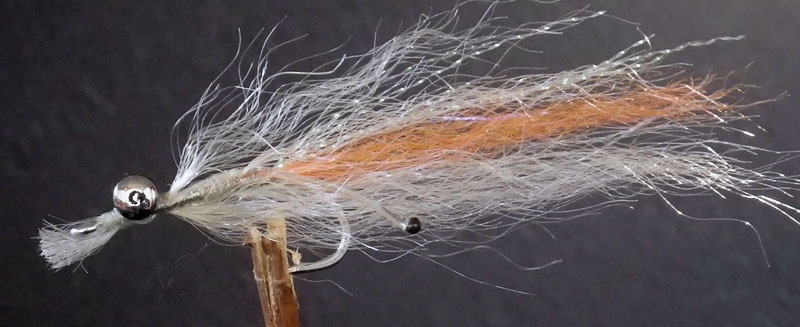
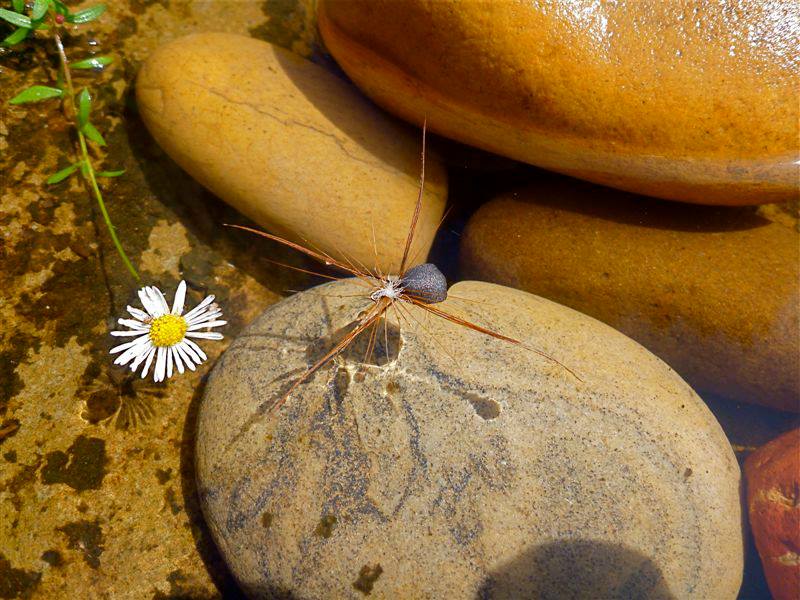
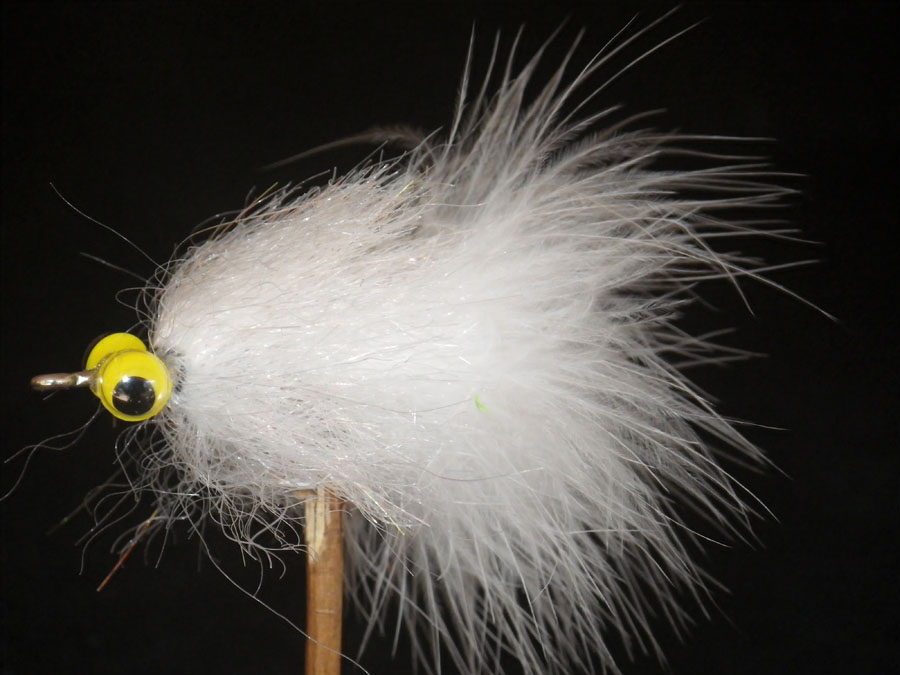
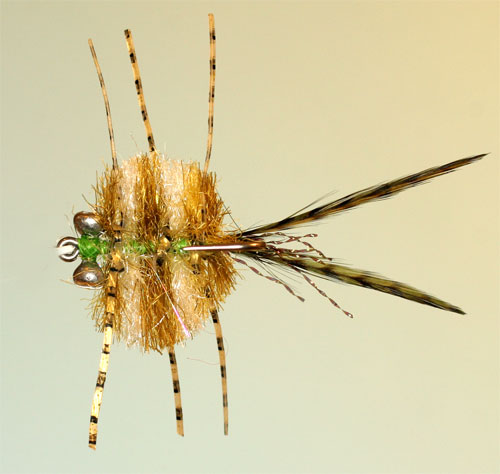
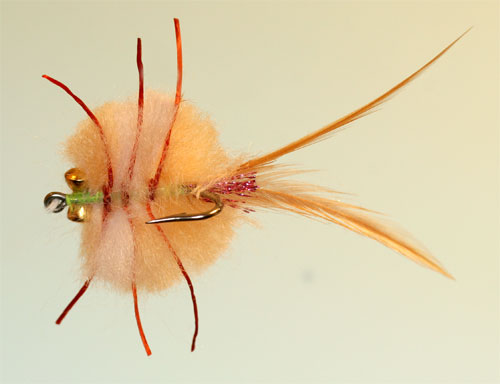
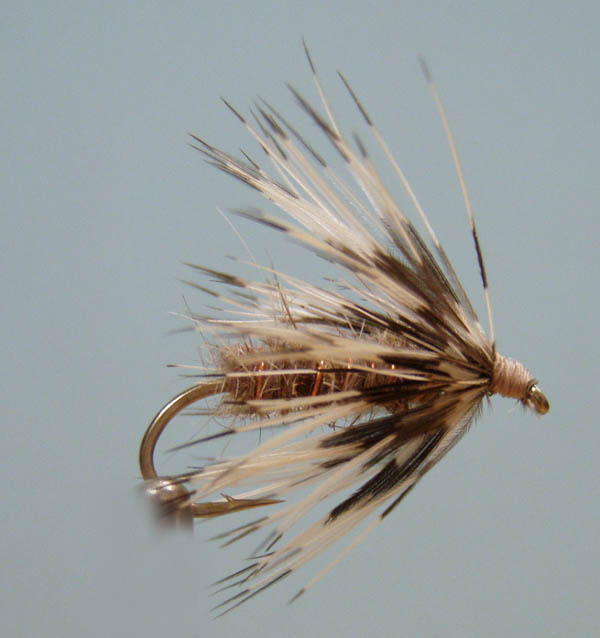

 D5 Creation
D5 Creation